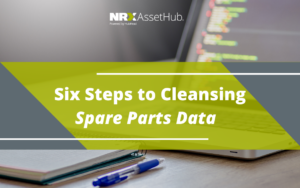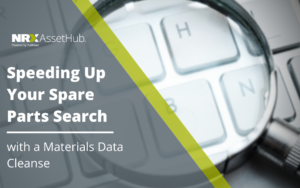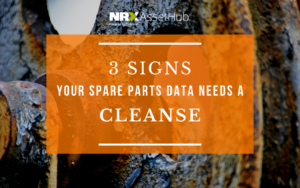If we imagine each project an organization undertakes as a story, then ideally each story finishes with a nice resolution and a happily ever after. All the loose ends are tied up with a neat little bow on top, and everything is in a better place than it was when the story began. Unfortunately, stories and projects are not that simple. In the context of materials data cleanses, maintaining a “happily ever after” and continuing to keep your materials data clean takes some work. The question of how effectively you can keep your materials data clean after your materials cleansing project is complete is a matter of effectively managing your spare parts. Below are some areas to consider if you want to keep your materials data clean long after the cleanse is complete.
Up your spare parts management game
1. Training: After you’ve introduced a new system that is designed keep your spare parts information uniform, consistent, and standardized, making workers knowledgeable about this system and ensuring that it is followed is important. Internal training documents and small orientation sessions may have to be developed to ensure no one strays from the standard.
2. Keep up your standards: Speaking of standards, if your cleanse wasn’t the opportunity to develop a standardized system for how your spare parts or workflows are managed, now is the time! Standardization is a way to prevent human errors and inconsistent patterns in your data. Employees who fail to follow standards should be educated and held accountable. Letting even the smallest instances of improper procedure slip through the cracks could have a domino effect that leads you back to poor quality materials data.
3. Set some security: A huge reason for inaccurate data in general is human error. Limiting who has access to certain spare parts inventories and keeping your EAM system secure can prevent mistakes by ensuring that not simply anyone can tamper with your spare parts or your spare parts data. This means that there are less opportunities for inaccuracies to occur or for any malicious attacks against your organization’s data to undo all your hard work of cleansing your materials data.
4. Review, analyze, report: Since your spare parts are some of the smallest subunits within your plant, managing them closely may be low on your list of priorities. However, performing regular audits to see which parts are often overstocked, which are frequently missing or misplaced, which are no longer used, and what vendor documents, work orders, or bills of materials are often neglected can give you a better sense of whether or not your spare parts data is beginning to become dirty again.
5. Implement a master data governance (MDG) solution: An MDG solution can result in high quality materials data due to the way it intelligently processes requests for information, helps you correct your data, and makes it easier to enforce standards. In the long term, this kind of solution can increase efficiency, productivity, and costs savings!

It’s iterative!
Clean data is never final, and continuing to reap the rewards of the many resources invested into your cleanse involves constantly monitoring and correcting any errors. Good spare parts management leads to good spare parts data, so consistently using the best practices for effectively managing your spare parts will guarantee clean materials data in the long term. If you’d like some more guidance to keeping your materials data clean, book a demo with us to chat with one of our experts, or check out one of our resources below to learn more about managing your spare parts!
Six Steps to Cleansing Spare Parts Data

Speeding Up Your Spare Parts Search with a Materials Data Cleanse

3 Signs Your Spare Parts Data Needs a Cleanse

Share this article

